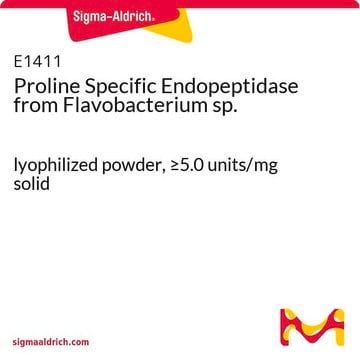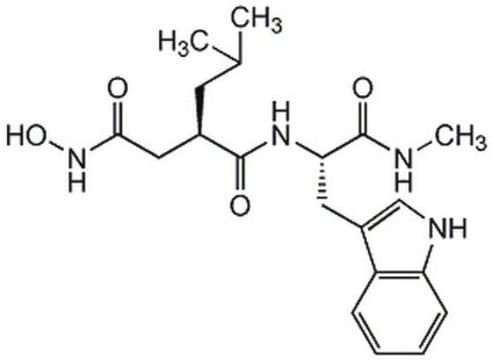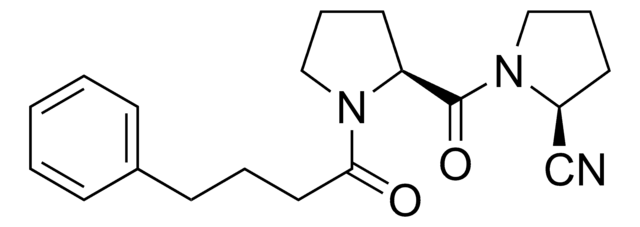537011
Prolyl Endopeptidase Inhibitor II
The Prolyl Endopeptidase Inhibitor II, also referenced under CAS 108708-25-4, controls the biological activity of Prolyl Endopeptidase. This small molecule/inhibitor is primarily used for Protease Inhibitors applications.
Synonym(e):
Prolyl Endopeptidase Inhibitor II, Z-PP-CHO
About This Item
Empfohlene Produkte
Qualitätsniveau
Assay
≥97% (HPLC)
Form
oil
Hersteller/Markenname
Calbiochem®
Lagerbedingungen
OK to freeze
protect from light
Farbe
colorless to off-white
Löslichkeit
DMSO: 10 mg/mL
DMF: soluble
ethyl acetate: soluble
Versandbedingung
ambient
Lagertemp.
−20°C
Allgemeine Beschreibung
Biochem./physiol. Wirkung
Mouse brain prolylendooeotidase
Verpackung
Warnhinweis
Sequenz
Rekonstituierung
Sonstige Hinweise
Kahyaoglu, A., et al. 1997. Biochem. J.322, 839.
Bakker, A.V., et al. 1990. Biochem. J.271, 559.
Wilk, S., and Orlowski, M. 1983. J. Neurochem.41, 69.
Rechtliche Hinweise
Lagerklassenschlüssel
10 - Combustible liquids
WGK
WGK 1
Flammpunkt (°F)
Not applicable
Flammpunkt (°C)
Not applicable
Analysenzertifikate (COA)
Suchen Sie nach Analysenzertifikate (COA), indem Sie die Lot-/Chargennummer des Produkts eingeben. Lot- und Chargennummern sind auf dem Produktetikett hinter den Wörtern ‘Lot’ oder ‘Batch’ (Lot oder Charge) zu finden.
Besitzen Sie dieses Produkt bereits?
In der Dokumentenbibliothek finden Sie die Dokumentation zu den Produkten, die Sie kürzlich erworben haben.
Unser Team von Wissenschaftlern verfügt über Erfahrung in allen Forschungsbereichen einschließlich Life Science, Materialwissenschaften, chemischer Synthese, Chromatographie, Analytik und vielen mehr..
Setzen Sie sich mit dem technischen Dienst in Verbindung.






